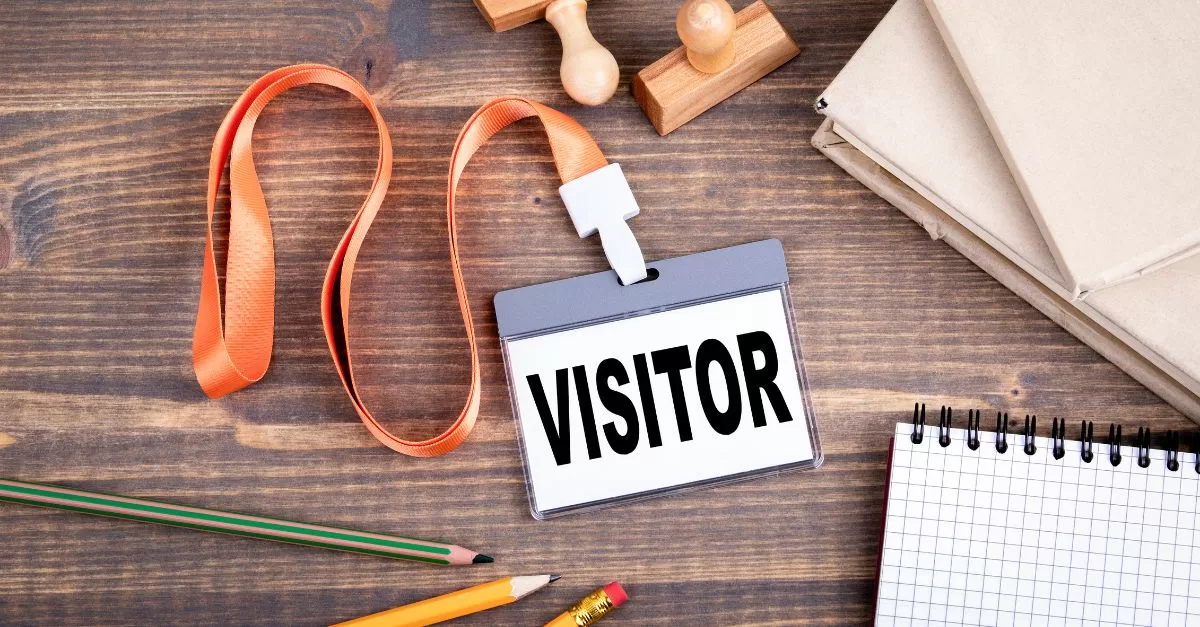Every year, we analyze the changing cost of Facebook ads. And every year, we find that Facebook ads remain one of the best investments in the digital marketing biz. They continually cost less per click and per lead, and those prices stay more stable than Google Ads.
That said, we still see many businesses overspend on Facebook ads. With all the customizations and targeting options, it’s easy to make mistakes (and miss opportunities).
I don’t want that to happen to you. So I’ve asked several very experienced Facebook ad pros for their best advice to get more leads and waste fewer dollars on the platform.
These aren’t hypotheticals. The ideas they shared delivered real-world results (higher click-throughs, lower costs, more conversions). Try them in your next campaign.
Contents
- Don’t fear “ugly” ads
- Feature people, not just products
- Get more savvy about data
- Use Facebook’s dynamic ad features
- Use the “engagement; purchase; scale” method
- Let the algorithms do the work
- Use the Conversion setting for Lead Ads
7 ways the pros make the most of Facebook ads
What I love about these tips is that they run the gamut from creative to technical. So whether you’ve been thinking about trying video ads or want to make better use of Facebook analytics, you’ll find something here to help.
💡 Use the Free Facebook Ads Performance Grader to find missed lead generation and conversion opportunities in your Facebook ads.
1. Don’t fear “ugly” ads
People have developed pretty good internal ad filters. When we see a shiny, slick ad in our Facebook feed, we skip right past it. The solution, according to Alexandra Greifeld, an eCom Growth Advisor, is “ugly ads.”
“An ‘ugly ad’ is anything that looks like platform-native content on Meta, i.e. an ad that looks like a photo or video shot by a real person, not a marketer,” she explained in a recent LinkedIn post. “Ugly ads bypass this filter because we clock them as organic content. So we’re more likely to pay attention to the content of the photo/video.”
I wanted to see what Alexandra considers to be a good “ugly” ad, and she sent me this example.

“Ugly ads” look like organic content, so Facebook users don’t automatically filter them out as advertisements.
The video looks like something any of us could make—no special lighting or graphics. Just a young woman talking about how “crazy” it is that one of her tea cups is stained while the other isn’t. The woman explains that the cleaner cup was a happy accident after changing to a less-toxic dishwashing detergent (which she only shows at the very end).
“This content doesn’t necessarily have to be aesthetically offensive, but it can be,” Alexandra said. “The key is making content that feels authentic and doesn’t feel overproduced. Does the average Meta user know about the rule of thirds? Nope.”
She typically sees much higher CTRs for “a good ‘ugly ad’ that truly appears to be platform native.” And, in fact, “If you’re in a category with low CTRs (cough…supplements), or you are hitting a wall in terms of ROAS, ‘ugly ads’ can help you break through,” she said.
But don’t expect your ROAS to go through the roof just because you served up a gritty, not-pretty video, Alexandra warned. “Does that mean that ‘ugly ads’ always perform? Nope. You have to convert that extra attention; the content of the ad has to be good—either selling the product or selling the click.”
The trick, she said, is to find the balance between realism and poor representation. “You don’t want to make the product look bad, but you want to make it look as ‘real’ as possible. People know that eCom photos are heavily doctored. They want to know how your product is really going to look when they try it on.”
2. Feature people, not just products
Ann-Marie Burrage, owner of the independent creative marketing agency Purple Octopus, showed me how she recently tripled an already healthy ROAS (return on ad spend) for a national butcher chain.
The key, she said, was respecting the nature of the advertising medium. “Simply ‘selling’ your products won’t necessarily work [on Facebook],” She said. “We must always remember that the platform we are using here is ‘social’ media and not a standard advertising platform.”
The business had been running ads with static product images and getting a four-to-one return on every ad dollar spent (well, pound, because they’re in the UK). Not bad, but not the best they could get.
“We decided to refresh the advertising and created a short video of a team member talking through one of the product packs,” Ann-Marie said. “This advert talked directly to their ideal customer, showing a more personal side to the business by meeting the butcher himself, thus building trust for the brand.”

Your people, not your products, build brand trust on social media.
It was the same type of product shown in the static-image ad. But by creating an authentic, relatable experience featuring the people behind the brand, the business netted a huge jump in results.
“This particular advert increased the ROAS to 12 within a week of going live, and current sales to date are 97% up on the previous period for the month of August,” Ann-Marie said.

The relatable video ad on Facebook helped the brand nearly double sales.
“It is important to talk in the language your customer would use and address the problem they have that your product or service solves,” Ann-Marie added.
There are three things Ann-Marie said you’ll need to know to make this strategy work:
- Know who you’re selling to: “There is a process we go through to ensure the client really understands who the target audience is.” (This guide will help you find your target audience)
- Know the buyer’s journey: “Understand where the customer is in their buying journey and create campaigns that guide them seamlessly through the funnel from awareness to conversion.”
- Know how to test: “Continual testing of different audiences at different stages of the funnel with different creatives and text is vital.”
Ann-Marie gave me two additional tips to make these ads more successful. “At the moment, we are finding that short-form text is working better than long-form,” she said. “And where possible, include a five-star review; this again builds trust and authority for the brand.”
3. Get more savvy about data
Over the last few years, we’ve seen a significantly heightened focus on privacy and data protection. For Ann-Marie, that’s an area brands need to put an increased focus on. “The introduction of policies like Apple’s App Tracking Transparency (ATT) has limited the scope of user data available for ad targeting. As a result, advertisers need to pivot their strategies.”
She called out three steps Facebook advertisers should take to improve how they collect, analyze, and use data.
Collect first-party data like its gold nuggets
Even though Google rescinded its plan to sunset third-party cookies, it’s still harder than ever to collect data (which is a huge plus for online privacy!).
“At Purple Octopus Marketing, we’ve adapted by placing greater emphasis on first-party data collection,” Ann-Marie said. “We encourage our clients to build robust customer data platforms (CDPs) and leverage tools such as lead generation forms within Facebook to collect data directly from users, ensuring compliance while maintaining effective targeting.”
Don’t rely on one source of analytics
Meta’s platform offers a pretty robust suite of analytics reporting, but you can’t always trust its conversion data. “Due to the privacy issue, we request access to the [client’s] ecommerce platform to measure the results,” Ann-Marie said. “We have found that there has been approximately a 20% drop off in recorded sales on Facebook vs. what has actually been generated via the website.”
So if you’re running Facebook ads, make sure to check the direct online sales data from your website and compare it to what you get from Meta.
Use data to improve sales and service
Ann-Marie said that Facebook ad data has uses beyond ad targeting and testing. “We also use an app called Zapier to share lead data collected within the Facebook platform with the client so they can respond to it quickly.”
For example, one of her clients likes to receive text messages with the lead information so they can immediately call the potential customer. Another one has their Facebook lead data pushed to a Google doc, where they can monitor all of their leads in one place.
📣 Free guide >> 130 of the Best Online Marketing Tips for Generating More Traffic, Leads, & Sales
4. Use Facebook’s dynamic ad features
A/B testing is a time-honored digital marketing technique to optimize ad performance. However, running manual A/B tests is time-consuming and not very efficient. Jordan Bucknell, Founder and CEO of Upbeat Agency, suggests using some of Facebook’s ad creative features to put your ad optimization on overdrive.
“One effective tactic we’ve implemented is Dynamic Creative Optimisation (DCO),” Jordan said. “Instead of sticking with a single static ad, DCO allows us to upload multiple versions of headlines, images, and calls to action. Facebook then dynamically tests these combinations to determine which performs best.”
Here’s how Meta illustrates the ad components you can optimize with DCO.

How effective can DCO be? Jordan told me they saw a 20% increase in click-through rates and a 15% bump in overall engagement by letting Facebook optimize the creative elements of an ad in real-time.
“The key is to provide enough variety in the creative assets so that Facebook can effectively test and optimize for different audience segments,” he added.
This brings us to Advantage+ creative, another Facebook ad feature Jordan has had success with. “This feature allows Facebook to automatically adjust your ad’s creative elements such as aspect ratio, templates, and even adding royalty-free music to enhance engagement.”
So where DCO automatically swaps out elements you’ve added, Advantage+ creative enhances them when it may lead to better results.

Facebook’s Advantage+ creative automatically optimizes the creative in your ads, like changing its aspect ratio for different formats.
Jordan said ads they run using Advantage+ creative regularly get higher conversion rates and a better ROAS.
His one warning is to make sure no one sees your ad too often. “One common mistake we see among newer social media marketers is neglecting ad frequency management,” he said. “Running ads too frequently to the same audience can lead to ad fatigue. To counter this, we regularly monitor our ad frequency and use Facebook’s tools to cap the number of times an individual sees the ad within a set period.”
Just by adding frequency caps, Jordan gets an average 12% decrease in cost per conversion and keeps those audiences engaged and interested.
5. Use the “engagement; purchase; scale” method
Ashley Rodriquez, an expert Facebook ad coach, has fined-tuned a three-step Facebook ad campaign that quickly identifies new customers, converts them, and scales that success. Ashley describes this as her “favorite tactic and most profitable strategy.”
Here’s how it works. She starts by running ads that warm up the audience. “This engagement campaign can be client reviews about the company, results, offers, guarantees, etc.,” she said. “Anything that will make someone stop the scroll and engage.”

Make a big deal out of positive customer reviews in both engagement and purchase Facebook ad campaigns.
The brilliance of this strategy is that it works like a marketing funnel. You start with broad targeting to see who’s interested, then you spend on the people most likely to buy.
“Once I have an audience of engaged customers, I retarget them with a purchase campaign,” Ashley explained. “Since the engagement campaign casts such a wide net, it’s time to narrow the audience and find the purchasers—hence the purchase campaign. A purchase campaign tells Facebook to find the section of the audience that is most likely to buy.”
Here’s where Ashley sees less-experienced SMMs mistakenly choose cheap clicks over meaningful conversions. “You will see various strategies that tell you to ‘optimize for link clicks’ and ‘drive traffic to your site’, but the problem is that that audience isn’t likely to make purchases” because Facebook prioritized looking for people who would click, not buy, she said.
Ashley added that while it’s possible some of the people you attract with a click-optimized campaign might buy, what you’ll also get is “tons of spam clicks, high bounce rates, and low-quality leads. Nobody wants to spend their hard-earned money on low-quality traffic and leads.”
That’s why she suggests optimizing for purchases after your engagement campaign. “Optimizing for purchases tells Facebook to find the audience that is most likely to purchase from you,” she said. “This will cost more, but the traffic quality is much better and it will benefit you more in the long run.”
Finally, Ashley scales the campaign by building a lookalike audience off of the original list, and increases the budget to hit new goals.

Here are the types of results Ashley gets with her three-step Facebook ads growth strategy.
6. Let the algorithms do the work
It’s easy to get lost in the minutia of managing Facebook ad campaigns. There are so many options for things like audience targeting, you can spend lots of time (and money) trying to find the right levers to pull.
But the platform has evolved in ways that make it less necessary to do so. In fact, Tyler Mask, Senior Manager, Social Advertising and Custom Solutions at LocaliQ, told me that’s one of the biggest mistakes he sees advertisers make.
“Meta’s algorithms have gotten smarter,” he said. “The need for advanced, detailed targeting profiles is not as important as it used to be.”
“The most important thing an SMM can do now is focus on A/B testing creative and brand messaging,” Tyler continued. “If an ad is not getting through to an audience, it’s more likely to do with the story we are telling and less to do with the targeting.”
He said you can’t just throw a hundred variations at the wall to see what sticks. “The biggest thing less-experienced SMMs misunderstand is that less is more. While Meta’s algorithms are the best in the business, having too many ad sets and ads under a campaign makes it challenging for it to optimize properly.”

Simplicity and a clear goal are the keys to successful A/B testing.
It also makes it nearly impossible for SMMs to make sense of what’s working and what needs to change, he added. “In short, well-thought-out A/B testing is important for both Meta’s AI and for SMM to make data-informed decisions.”
7. Use the Conversion setting for Lead Ads (instead of lead forms)
The goal of many Facebook ad campaigns is to generate leads. Mat Wendler, Manager, Customer Solutions at LocaliQ, said that advertisers should take advantage of a change in how Facebook handles lead generation.
“The lead objective has significantly evolved over the past few years,” he said. “We can now directly track attribution from a client’s form on their website.”
That’s because Facebook added the “Conversion” setting for Lead Ads, which lets you drive leads to your website or app, instead of having them fill out a lead form on Facebook.

The “Conversions” option in Facebook ad objectives is how you drive people to lead generation forms on your website.
“Advertisers often encounter an increase in ‘spam’ leads with Facebook forms,” Mat added. “We’ve observed great success with advertisers transitioning to their website forms, as the intent to complete these forms is higher compared to filling out a form directly on Facebook.”
Of course, it’s worth testing both options for your brand. You may find the additional spam leads an acceptable trade-off to an increase in overall leads. But Mat’s experience is that you’ll end up with a much higher lead quality if you have people fill out forms on your site.
Besides better leads, you’ll also be generating website traffic with the Conversion setting, which will let you further engage those visitors.
Use Facebook ads to really connect with customers
Even after all these years, Facebook ads are still an effective and efficient way to generate clicks, leads, and conversions. But they can be tricky, especially as the platform becomes more sophisticated.
The overarching theme from the experts I spoke with is to focus on connecting with your audience in a way that feels natural to the platform. Then test variations in a manageable way (and give these advertising techniques a try, too).
If you’re still struggling to get a great ROAS from Facebook ads, contact us. We’ll show you how we can help you get more return for each dollar you spend.
For now, here’s a recap of the seven Facebook ad tactics the expert advertisers shared:
- Don’t fear “ugly” ads
- Feature people, not just products
- Get more savvy about data
- Use Facebook’s dynamic ad features
- Use the “engagement; purchase; scale” method
- Let the algorithms do the work
- Use the Conversion setting for Lead Ads







